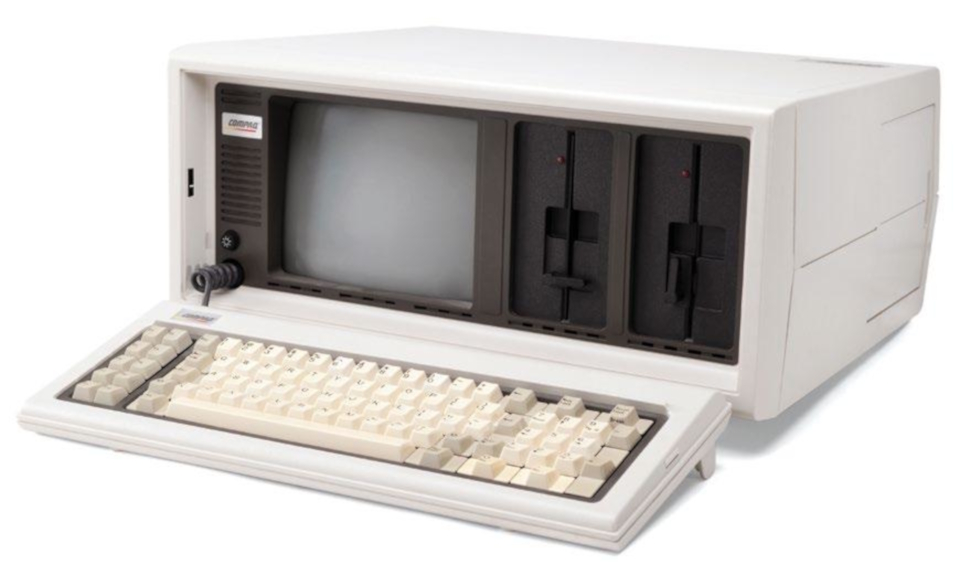A comprehensive history of the PC
A detailed look at the emergence and evolution of the personal computer
The rise of the clones
Initially IBM wasn’t concerned. While a PC could be mostly replicated with retail parts, the BIOS belonged to IBM, which guaranteed proper IBM compatibility.
However, companies such as Award and American Megatrends reverse-engineered IBM’s BIOS, and companies such as Dell, Compaq and HP then used cloned BIOSes to build clone machines.
The first clone came from Columbia Data Products with 1982’s MPC 1600, but 1983 saw the landmark Compaq Portable, the first computer to be almost fully IBM compatible.

Compaq used its own BIOS and provided a very different form factor to a desktop PC, with all the components in one box, including a small CRT monitor.
When IBM released its ill-fated budget PCjr in 1984, RadioShack made a clone, the Tandy 1000. It was far more successful than the PCjr, with better PC compatibility.
After the PCjr’s cancelation, existing software and peripherals came to be associated with the Tandy. Far cheaper clones were eroding IBM’s control of the market, with its share dropping from 76 percent in 1983 to 26 percent in 1986.
Enter the 386
At least IBM had the technological lead, but even that would be eroded when Compaq released 1986’s Deskpro 386. Intel had recently released its 32-bit 80386 CPU, but unfortunately for IBM, Compaq beat it to market with a 386 machine boasting 1MB of RAM and MS-DOS 3.1.
Are you a pro? Subscribe to our newsletter
Sign up to the TechRadar Pro newsletter to get all the top news, opinion, features and guidance your business needs to succeed!
This was two to five times faster than a 286, with a base price of $6,500. Compaq’s machines were the very top of the line, and would steal IBM’s title of business leader.
IBM fought back with 1987’s Personal System/2 (PS/2), finally releasing a 386 to market; the most powerful model sported a 20MHz CPU, 2MB of RAM and a 115MB hard disk.
This was a landmark computer, standardising on things such as a 1.44MB 3.5-inch floppy, and the PS/2 ports still used by mice and keyboards.
However, the biggest leap was in the introduction of VGA graphics. On the desktop, this meant 640x480 in 16 colours, and a low-res mode of 320x200 in 256 colours, popular for gaming.
Despite the incredible advances, IBM continued to lose ground to the clones. Although the PS/2 line sold well for a time, IBM’s machines were still too expensive for the general public.
As the ’80s progressed, the name ‘PC’ started losing its association with IBM, and people started referring instead to ‘IBM-compatibles’.
Although the PC was sweeping America, in many regions worldwide micros were still wildly popular; Europe was particularly enamoured with the Atari ST and Commodore Amiga.
Where PCs were lacking in the GUI stakes, these Motorola 68000-based machines already had sophisticated GUIs and astonishing multimedia capabilities that would trounce PCs for some years – often at a fraction of the cost.
Nevertheless, the PC continued to grow and develop, with further advancements such as 800x600 SVGA (Super VGA) graphics in 1988.
And the ’80s had one last trick up their sleeve: in April 1989, Intel released the 486, the powerhouse CPU that would kickstart the next decade.
The first computer to ship was IBM’s 486/25 Power Platform in October, the most powerful machine on the market. We entered the decade with 8-bit micros and left with full 32-bit processors and SVGA graphics.
It’s unlikely such rapid progress will be repeated.